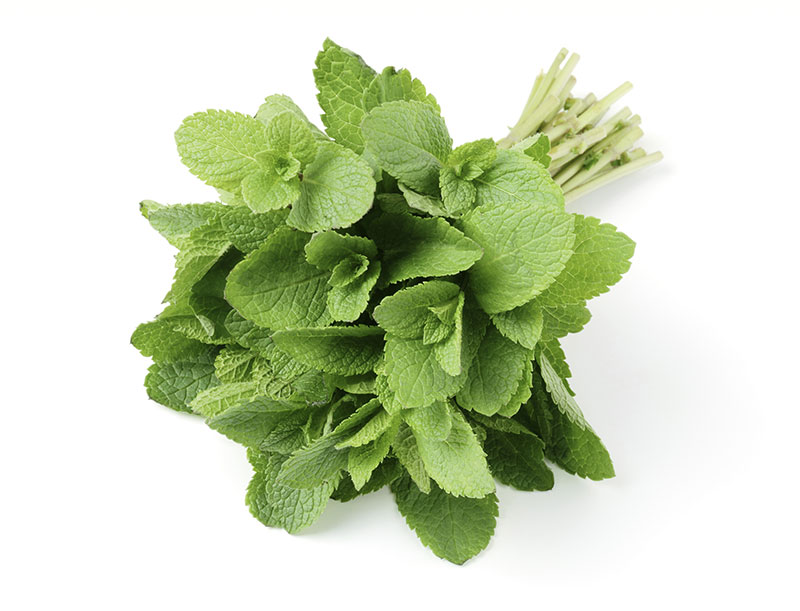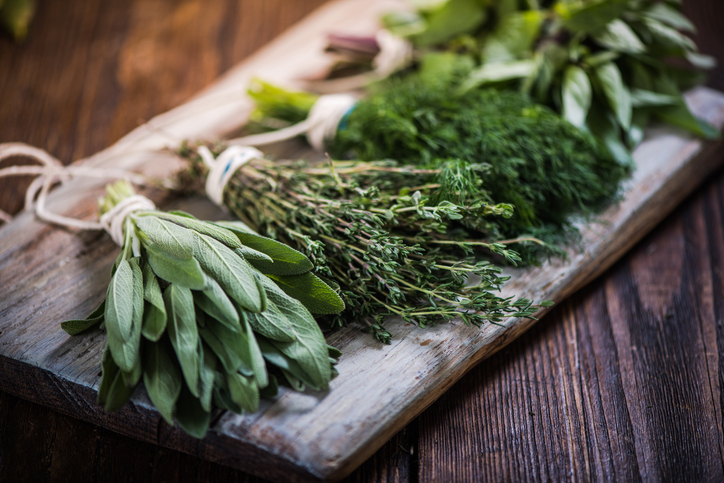Herbs, Mint

Availability:
| J | F | M | A | M | J | J | A | S | O | N | D |
Description:
There are dozen and dozens of varieties of mint. The two most notable types are peppermint (Mentha piperita L.) and spearmint (M. spicata L.), and of those, you have dozens more varieties. The varieties may also be variegated (multi-colored green and white).
An easy way to tell the difference between the two types: peppermint has darker pointy-tipped leaves, and spearmint has slightly ruffled or ridged leaves which do not come to as sharp of a point (pictured here). Flavor-wise, they are pretty close, but peppermint is more peppery, or has a sharper, stronger taste.
There is a third type of mint called “apple mint”. Their leaves have a delicate peach-fuzz of tiny hairs called trichomes, and they have a lemony, fruity, or apple flavor mixed with mint. There are many varieties of apple mint, such as pineapple mint.
The overall taste is fresh, aromatic, green, herbaceous, slightly menthol, and peppery. Mint is fragrant and used in desserts, beverages, jams/jellies, teas, and medicinally. It is served with fresh fruit, or used as a garnish. Many desserts come with a spring as a garnish. Mint can be used in sweet or savory menu applications, and one famous savory combination is mint jelly with lamb.
Recommended Storage
The recommended optimum storage temperature is 32° – 40°F. Their leaves are delicate, you don’t want to allow them to freeze, but keep them as cold as possible. Keep them covered, they are susceptible to wilting when allowed to dehydrate. With the exception of oregano and basil, we recommend you store all herbs in the coldest part of your cooler. The temperature fluctuates from the front to the back of the cooler due to the location of the cooling unit and frequency of the door being opened. Download our PDF for more cooler storage hints.
Check out what’s going on this week. For our latest market update, please see The FreshPress.
You can also click here to be notified when we post fresh new videos.


